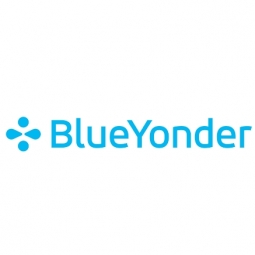Download PDF
ITC Limited Creates the Perfect Recipe for Supply Chain Success
Technology Category
- Platform as a Service (PaaS) - Data Management Platforms
Applicable Industries
- Food & Beverage
Applicable Functions
- Logistics & Transportation
- Procurement
Use Cases
- Supply Chain Visibility
- Demand Planning & Forecasting
Services
- System Integration
The Challenge
ITC Limited, a multi-billion-dollar conglomerate based in India, was facing challenges in managing its supply chain for its fast-growing packaged foods business, particularly biscuits. The biscuit segment was experiencing high demand volatility and materials cost fluctuations. ITC's existing spreadsheet-based tools were not accounting for its continuously changing cost structures, making it difficult for the company to see the macro effects of the supply chain decisions they were making. The frequent manufacturing changeovers required to produce its more than 120 distinct biscuit SKUs across its network of 17 factories and the dramatic price fluctuations in the agricultural sector that affect their materials costs added to the complexity of cost optimization. Furthermore, ITC’s spreadsheet-based planning did not allow them to make effective medium and long-range strategic plans.
About The Customer
ITC Limited is a multi-billion-dollar conglomerate based in India with a diversified presence in fast-moving consumer goods, hotels, paper and packaging, agriculture and information technology. The company’s packaged foods business is experiencing fast growth, with biscuits (cookies) representing its largest single category. The biscuit segment experiences high demand volatility and materials cost fluctuations. The company operates a supply network of more than 17 factories and 50 warehouses. ITC is committed to maintaining its leadership position in the biscuit category and capitalizing on future growth opportunities.
The Solution
To maintain its leadership position in the biscuit category and capitalize on future growth opportunities, ITC turned to Blue Yonder to ensure that the company’s supply network, which includes more than 17 factories and 50 warehouses, was delivering products to the market at the lowest possible cost. The company implemented Blue Yonder’s network design capabilities, which allowed them to take a total-cost optimization approach toward its strategic, as well as tactical, supply chain planning. The solution provided a transparent perspective on how any new investments would impact its overall cost structure. This enabled ITC to structure a five-year capacity roadmap, based on a total-cost approach, that simultaneously considers location, capacity, capability and timeline constraints. The quick response model enabled by Blue Yonder positions the company to continuously improve its cost position, no matter what trends emerge.
Operational Impact
Quantitative Benefit
Related Case Studies.

Case Study
The Kellogg Company
Kellogg keeps a close eye on its trade spend, analyzing large volumes of data and running complex simulations to predict which promotional activities will be the most effective. Kellogg needed to decrease the trade spend but its traditional relational database on premises could not keep up with the pace of demand.

Case Study
HEINEKEN Uses the Cloud to Reach 10.5 Million Consumers
For 2012 campaign, the Bond promotion, it planned to launch the campaign at the same time everywhere on the planet. That created unprecedented challenges for HEINEKEN—nowhere more so than in its technology operation. The primary digital content for the campaign was a 100-megabyte movie that had to play flawlessly for millions of viewers worldwide. After all, Bond never fails. No one was going to tolerate a technology failure that might bruise his brand.Previously, HEINEKEN had supported digital media at its outsourced datacenter. But that datacenter lacked the computing resources HEINEKEN needed, and building them—especially to support peak traffic that would total millions of simultaneous hits—would have been both time-consuming and expensive. Nor would it have provided the geographic reach that HEINEKEN needed to minimize latency worldwide.

Case Study
Energy Management System at Sugar Industry
The company wanted to use the information from the system to claim under the renewable energy certificate scheme. The benefit to the company under the renewable energy certificates is Rs 75 million a year. To enable the above, an end-to-end solution for load monitoring, consumption monitoring, online data monitoring, automatic meter data acquisition which can be exported to SAP and other applications is required.

Case Study
Coca Cola Swaziland Conco Case Study
Coco Cola Swaziland, South Africa would like to find a solution that would enable the following results: - Reduce energy consumption by 20% in one year. - Formulate a series of strategic initiatives that would enlist the commitment of corporate management and create employee awareness while helping meet departmental targets and investing in tools that assist with energy management. - Formulate a series of tactical initiatives that would optimize energy usage on the shop floor. These would include charging forklifts and running cold rooms only during off-peak periods, running the dust extractors only during working hours and basing lights and air-conditioning on someone’s presence. - Increase visibility into the factory and other processes. - Enable limited, non-intrusive control functions for certain processes.

Case Study
Temperature Monitoring for Restaurant Food Storage
When it came to implementing a solution, Mr. Nesbitt had an idea of what functionality that he wanted. Although not mandated by Health Canada, Mr. Nesbitt wanted to ensure quality control issues met the highest possible standards as part of his commitment to top-of-class food services. This wish list included an easy-to use temperature-monitoring system that could provide a visible display of the temperatures of all of his refrigerators and freezers, including historical information so that he could review the performance of his equipment. It also had to provide alert notification (but email alerts and SMS text message alerts) to alert key staff in the event that a cooling system was exceeding pre-set warning limits.

Case Study
Coca-Cola Refreshments, U.S.
Coca-Cola Refreshments owns and manages Coca-Cola branded refrigerators in retail establishments. Legacy systems were used to locate equipment information by logging onto multiple servers which took up to 8 hours to update information on 30-40 units. The company had no overall visibility into equipment status or maintenance history.





